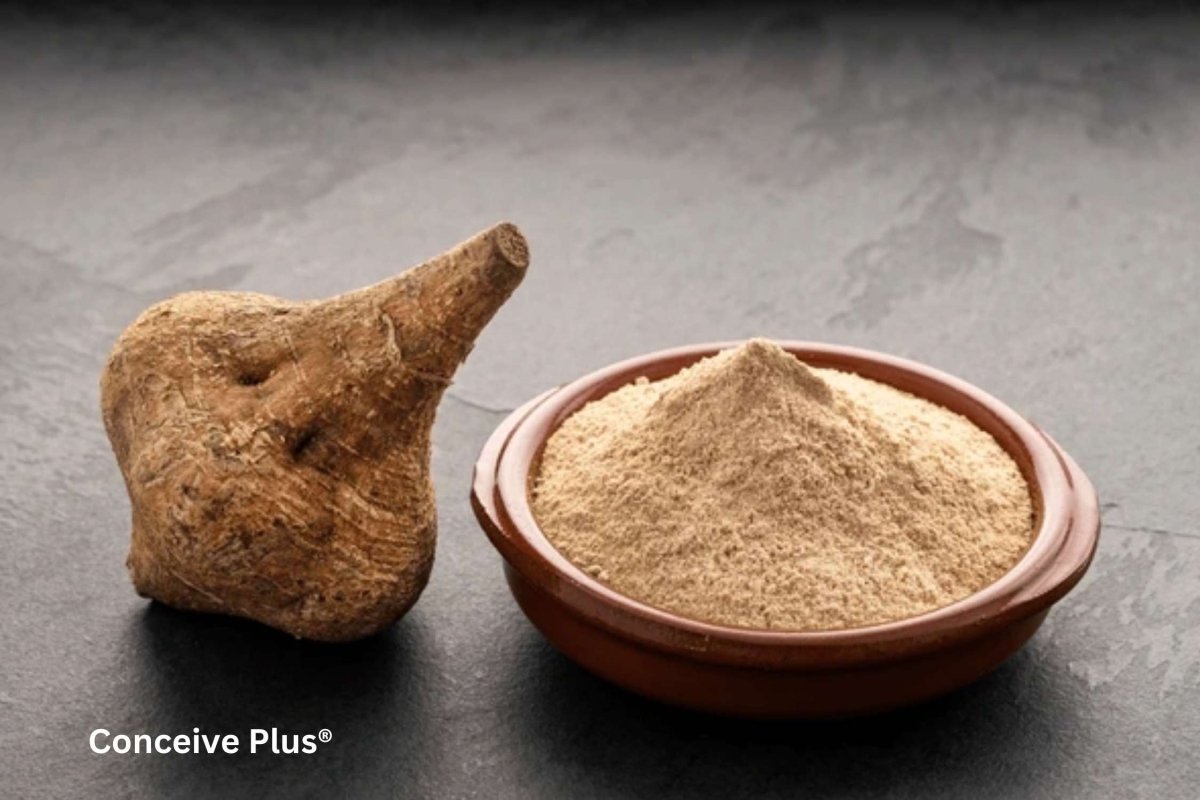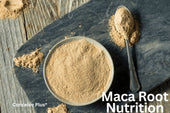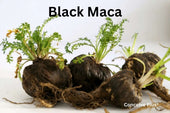Organic Maca Is the Health World: A Comprehensive Examination

The global health landscape continually evolves as new plant-based solutions emerge. Many of these discoveries stem from centuries-old practices, offering the modern wellness seeker a blend of tradition and innovation. Among such time-tested botanical treasures is organic maca, a root sourced from the high Andes of Peru. Countless consumers praise its potential to support energy, vitality, and general well-being.
In this article, we will delve into how this unique root gained prominence, explore its core nutritional highlights, examine its potential benefits, consider various forms and usage methods, and review ways to fit it seamlessly into daily life. Our journey combines current scientific findings with historical insights, guiding you through a thorough understanding of a remarkable plant that has been cherished by traditional communities and cutting-edge health enthusiasts alike.
The Ancient Roots of a Modern Superfood
Traditionally cultivated at altitudes exceeding 12,000 feet, this root has flourished in the harsh conditions of the Peruvian Andes for centuries. The extreme weather and nutrient-rich soil of this mountainous region appear to endow the plant with robust phytonutrient levels. Evidence suggests that indigenous populations in the region not only used it as a dietary staple but also valued it for its reputed energizing and fertility-supporting properties. Spanish colonial documents even reference it as part of daily rations for workers who toiled at high elevations, reporting improved stamina and productivity. Such endorsements fueled early curiosity that eventually led to global awareness and commercial distribution [1].
This cultural heritage underscores why this Andean root holds such appeal: it connects modern wellness approaches with ancestral knowledge. Many people today seek natural methods for supporting vitality, immunity, and balanced hormone function. Historical usage provides a starting point for modern scientific inquiry, prompting researchers to investigate potential mechanisms behind its effects. While traditional communities may have relied on it for basic nourishment, contemporary enthusiasts are increasingly exploring its role in complex health routines, from stress relief to sports performance enhancement.
Nutritional Profile and Core Compounds
A major reason for its rising popularity lies in its nutritional composition. This hearty root packs a range of vitamins, minerals, amino acids, and antioxidants, aligning with the core criteria for a superfood. Some studies have found that it can deliver noteworthy amounts of vitamin C, copper, iron, and B vitamins. The presence of essential amino acids also contributes to its high-quality protein content, especially valued in a largely plant-based dietary landscape. Additionally, specialized compounds known as macamides and macaenes may play roles in supporting the body’s stress-response systems.
One aspect that sets this plant apart is its classification as an adaptogen, suggesting it might help the body adapt to various stressors. Adaptogens are renowned for potentially modulating hormones and promoting balance in the body. This can be particularly attractive to individuals dealing with fluctuating moods, energy crashes, or external stress. Though ongoing research is needed to confirm the full extent of these adaptogenic properties, preliminary findings have led health enthusiasts to champion its inclusion in daily diets. Furthermore, some experts point to polysaccharides in the plant, which may enhance immune function and serve as additional nutritional support [2].
Potential Health Advantages
While no plant can be considered a cure-all, a combination of anecdotal accounts and emerging science highlights several possible advantages. Many advocates highlight an energizing effect that seems gentler than caffeine. Unlike the jittery crash often associated with coffee, users report a stable sense of vitality, enabling them to carry out tasks more efficiently. This sustainable form of energy can be especially appealing for individuals prone to nervousness or sensitivity to stimulants.
Another reported area of benefit involves hormonal health. Traditional practice and early research suggest that certain compounds in this root may interact with endocrine function, influencing processes related to fertility, libido, and menstrual health. Some studies indicate that it could offer mild relief from menopausal discomforts or premenstrual tension. Though these findings vary, the anecdotal support remains significant. Men, too, may experience enhanced vigor, reflected in preliminary research suggesting an increase in certain hormones relevant to athletic performance.
Forms, Dosages, and Usage
With rising global interest, many variations have emerged in the market. These distinct formulations cater to diverse lifestyles, preferences, and health objectives. Consumers often start with small daily servings, gradually increasing intake based on how their bodies respond. Though exact dosages can vary, many experts recommend one to three teaspoons of powder per day when initially experimenting. It’s advisable to remain mindful of personal tolerance and any possible side effects, such as digestive discomfort.
One frequently encountered product is maca capsules, which present a straightforward option for those who prefer measured servings. These capsules eliminate the need for mixing and can be taken with a glass of water, making them ideal for busy schedules. Another is organic maca root powder, typically preferred by enthusiasts who enjoy incorporating it into recipes or beverages. Smoothies, oatmeal, baked goods, and even salad dressings can benefit from a mild, nutty taste [3].
Meanwhile, maca powder capsules represent a fusion of the two approaches—powdered convenience encapsulated for quick intake. This format can accommodate travelers or individuals with limited kitchen access. Some people enjoy the flavor more than others, and the concentrated powder form allows for creative culinary uses. Because everyone’s physiologic response varies, paying attention to your individual reactions and adjusting intake accordingly is wise. Consulting a healthcare professional prior to making substantial changes in any wellness regimen is similarly advisable, particularly if you have pre-existing health conditions or concerns.
Curious whether maca root can stop your period and affect your menstrual cycle? Check out our article 'Can Maca Root Stop Your Period and Affect Your Menstrual Cycle' for a detailed explanation.
Incorporating This Adaptogen Into Your Lifestyle
For those seeking a hands-on approach, experimenting with recipes can be both fun and beneficial. Traditional communities in Peru sometimes consume fresh maca root in soups or stews. Outside of the Andes, it can be added to smoothies, blended into energy bars, or used in pancake batter. When combined with sweet ingredients like bananas, dates, or apples, it can bring out pleasant flavor notes. Adding the powder to sauces or protein shakes is another way to integrate it without significantly altering taste profiles.
If one chooses to incorporate organic maca root in powder form, there’s the flexibility of layering additional superfoods to develop unique, nutrient-packed meals. The mild essence of this Andean plant pairs well with the natural sweetness of fruits and the richness of nut butters. Some people enjoy mixing it into golden milk or matcha lattes, crafting distinctive hot beverages that can be enjoyed in the morning or afternoon. The variety of ingestion methods ensures that everyone can find an option that suits their tastes and habits [4].
Whether you rely on a plant-based diet, favor balanced omnivorous meals, or follow specialized eating plans, the root can generally be adapted without much hassle. Vegans and vegetarians, in particular, may appreciate its mineral content and protein profile. However, it is worth noting that no single food provides absolute nutrition. Balancing this root with other nourishing staples, alongside consistent physical activity and sufficient rest, will deliver the most comprehensive results.
Holistic Integration Into Daily Routines
While nutritional supplements can offer concentrated benefits, synergy across multiple lifestyle factors is often most effective. Incorporating this root in your diet should be accompanied by adequate hydration, balanced macronutrients, regular physical exercise, and sufficient rest. For those aiming to optimize energy and mood, complementary practices such as meditation, breathing exercises, or gentle stretching can amplify adaptogenic effects.
Many wellness advocates also emphasize the importance of mindful consumption, which means paying attention to how your body responds. Some people keep journals to monitor energy levels, sleep patterns, and emotional changes after introducing new foods or supplements. This can provide personalized feedback, helping you determine the ideal serving size and timing. If unexpected side effects occur—though they tend to be uncommon—scaling back or discontinuing use may be prudent.
When used strategically, this Andean root has the potential to support broader goals related to wellness and personal growth. Whether your interests lie in boosting athletic performance, balancing hormones, or simply adding variety to your diet, the key is consistent, intentional use. Adopting a holistic approach ensures that you benefit not only from any single supplement, but from an overall environment conducive to health [5].
If you're looking to harness maca's potential to boost reproductive health, be sure to check out our guide on best maca root for fertility to discover how to pick the ideal type for you.
The Bottom Line
Organic maca has captured the interest of individuals across cultural and geographical divides. Its remarkable history in the Peruvian Andes, coupled with modern scientific inquiry, paints a compelling picture of a root that may enhance energy, support hormonal equilibrium, and help manage stress. Whether you choose to enjoy it in capsule form, explore the culinary potential of organic maca root powder, or integrate fresh maca root into family meals, the versatility makes it accessible to nearly everyone. By sourcing products thoughtfully, monitoring personal reactions, and complementing intake with wholesome lifestyle habits, you can harness the potential of organic maca root to enrich your wellness journey. From ancient traditions to modern kitchens, this adaptive Andean root continues to stand out as a valuable option for those seeking natural avenues to bolster overall vitality. And as research progresses, our understanding of its possibilities will likely deepen, ensuring that this superfood remains a prominent feature in holistic health conversations around the globe.
References
- Vega-Baudrit J, Monagas-Juan M, Navarro-Hoyos M, Villar-López M. Exploring the chemical and pharmacological variability of Lepidium meyenii: a comprehensive review of the effects of maca. Front Pharmacol. 2024 Feb 19;15:1360422. doi: 10.3389/fphar.2024.1360422. PMID: 38440178; PMCID: PMC10910417.
- Institute of Medicine (US) Panel on Dietary Antioxidants and Related Compounds. Dietary Reference Intakes for Vitamin C, Vitamin E, Selenium, and Carotenoids. Washington (DC): National Academies Press (US); 2000. 5, Vitamin C. Available from: https://www.ncbi.nlm.nih.gov/books/NBK225480/
- Gonzales-Arimborgo C, Yupanqui I, Montero E, Alarcón-Yaquetto DE, Zevallos-Concha A, Caballero L, Gasco M, Zhao J, Khan IA, Gonzales GF. Acceptability, Safety, and Efficacy of Oral Administration of Extracts of Black or Red Maca (Lepidium meyenii) in Adult Human Subjects: A Randomized, Double-Blind, Placebo-Controlled Study. Pharmaceuticals (Basel). 2016 Aug 18;9(3):49. doi: 10.3390/ph9030049. PMID: 27548190; PMCID: PMC5039502.
- Gonzales GF, Villaorduña L, Gasco M, Rubio J, Gonzales C. Maca (Lepidium meyenii Walp), una revisión sobre sus propiedades biológicas [Maca (Lepidium meyenii Walp), a review of its biological properties]. Rev Peru Med Exp Salud Publica. 2014;31(1):100-10. Spanish. PMID: 24718534.
- Beharry S, Heinrich M. Is the hype around the reproductive health claims of maca (Lepidium meyenii Walp.) justified? J Ethnopharmacol. 2018 Jan 30;211:126-170. doi: 10.1016/j.jep.2017.08.003. Epub 2017 Aug 12. PMID: 28811221.
































